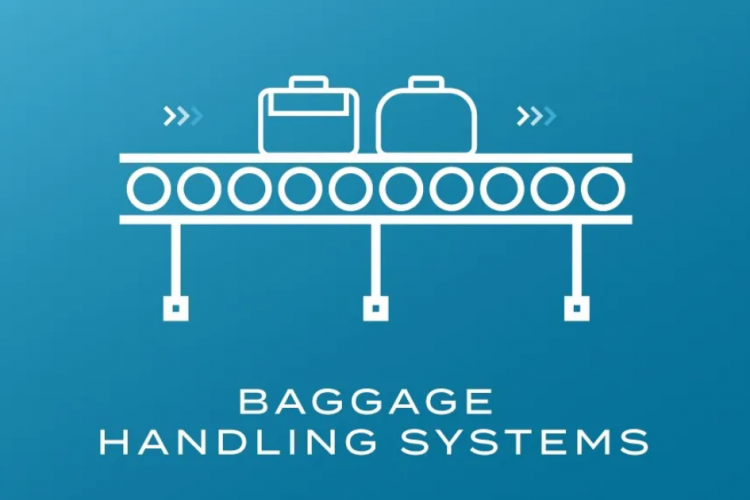Tech Talk: The role of Baggage Handling Systems – (BHS)
- Like
- Digg
- Del
- Tumblr
- VKontakte
- Buffer
- Love This
- Odnoklassniki
- Meneame
- Blogger
- Amazon
- Yahoo Mail
- Gmail
- AOL
- Newsvine
- HackerNews
- Evernote
- MySpace
- Mail.ru
- Viadeo
- Line
- Comments
- Yummly
- SMS
- Viber
- Telegram
- Subscribe
- Skype
- Facebook Messenger
- Kakao
- LiveJournal
- Yammer
- Edgar
- Fintel
- Mix
- Instapaper
- Copy Link
Posted: 23 May 2022 | BagsID Network | No comments yet
The baggage handling system is arguably the most important part of the bag journey. Below we talk through what it is, what it does, and why it is so critical to airport operations.


What is a Baggage Handling System?
A Baggage Handling System (BHS) is a type of conveyor system installed at airports that transports checked baggage from the check-in desk to areas where bags can be loaded onto aircraft. A BHS also transports checked baggage coming from aircraft to the baggage claim area, or to the transfer area, the airside site where bags can be loaded onto another aircraft for onward travel.
The first automated BHS was invented by BNP Associates in 1971. Half a century later, such systems are a familiar feature in airports around the world. The challenge for airports remains much the same now as it did then. Moving baggage manually to and from the airport terminal to the aircraft is time-consuming, costly, and labor-intensive. Automating check-in conveyors, baggage screening, sortation, make-up and reclaim is proven to improve process efficiency, passenger experience and safety.
The BHS at an airport plays a crucial role in keeping travelers happy. It also can make the difference in an airport’s ability to attract or keep a major airline hub.
A baggage-handling system has three main jobs:
- Move baggage from the check-in area to the departure gate
- Move baggage from one aircraft to another during transfers
- Move baggage from the arrival gate to the baggage-claim area
The measure of a successful baggage-handling system is simple: Can bags move from point to point as fast as travelers can? If bags move slower, this results in frustrated travelers waiting for baggage, or baggage failing to make connecting flights on time. Alternatively, if baggage moves too fast, baggage may make the flight, but passengers may not.
Each airport has its own requirements. For instance, the time allotted for baggage to make it from the check-in area to the gate is determined by how fast a passenger can make the same trip. In some airports, it might only be a short walk to the passenger terminal, while in others, passengers might have to take a train or monorail.
The efficiency of baggage handling has a great impact on the entire airport operation, as delayed baggage can affect aircraft turnaround time, reduce minimum connection time, affect gate management and airport capacity utilization.
Technology can also play a major role in improving efficiency in baggage handling, for example, The Denver International Airport has a modern, automated baggage-handling system designed by BAE Automated Systems. United Airlines uses Terminal B at the Denver Airport as a hub, so this terminal has the most automation. This system incorporates some sophisticated technology to move baggage from the check-in counter to the departure gate in an almost completely automated way:
- Destination-coded vehicles (DCVs), unmanned carts propelled by linear induction motors mounted to the tracks, can load and unload baggage without stopping.
- Conveyors equipped with junctions and sorting machines automatically route the baggage to the gate.
While the primary function of a BHS is the transportation of baggage, a typical BHS will serve other functions involved in making sure baggage gets to the correct location in the airport.
In addition to sortation, a BHS may also perform the following functions:
- Detection of baggage jams
- Volume regulation (to avoid system overloads)
- Load balancing (to evenly distribute bag volume between systems)
- Baggage counting
- Baggage tracking
A BHS really is an integral part of the airport operation but there remain huge opportunities to integrate new technology and systems to improve passenger experiences and increase airport and airline operations.
Look out for our next exciting Tech Talk, looking at the role of the Baggage Reconciliation Systems (BRS), coming soon.
Related topics
Airport development, Airside operations, Artificial intelligence (AI), Autonomous Technology, Baggage handling, Big data, Capacity, Communication Technology, Contactless / Touchless technology, Cyber-security, Digital transformation, Information technology (IT), Machinery, New technologies, Operational efficiency, Passenger experience and seamless travel, Terminal operations


















